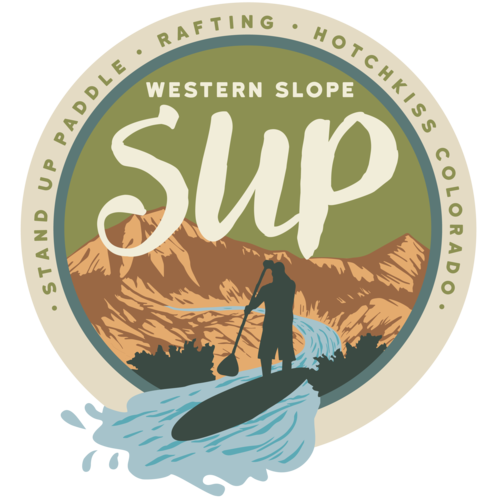February Snowpack Report
As snow piles up in the high country, here is a comprehensive look at how the past few weeks of big February storms will affect our rivers this spring and summer.
This chart shows 2021 snowpack in the Gunnison River Basin. Though the basin is still below average, snowpack has increased rapidly over the past month.
Snow At Last!
For many of us here on the western slope who spent December and January looking at bare mountainsides, wondering when it was going to snow, prayers were answered this month. For most of this winter, snowpack in the Gunnison River basin had been hovering around 60% of the average. Grim numbers for those who count on the river for agriculture and recreation. Snowpack in our local backcountry affects farmers, ranchers, and river runners alike. A wet year in the mountains can translate into juicy Paonia peaches, farm-fresh tomatoes, productive grazing lands, and big spring runoff in the North Fork, and Gunnison river.
February started with a bang, when our first real winter storm hit early in the month, dumping over a foot of fresh powder in the mountains around the North Fork Valley. Over the following 3 weeks, a series of powerful winter storms blasted Western Colorado, bringing multiple feet of snow to local ski resorts Powerhorn, Crested Butte, and Aspen, who now report 43, 56, and 60 inch snow bases respectively. Snowpack on Mcclure Pass, at the headwaters of the North Fork of the Gunnison River more than doubled in less than a month, between January 19th and February 16th. This past weekend, for the first time all winter, backcountry enthusiasts found it worthwhile to groom the ski and snowmobile trails over the Grand Mesa connecting Paonia and Hotchkiss. In all, our snowpack shot up from 60% to 88% of the average in just 3 short weeks.
Drought in recession
These big snowfall numbers will go a long way to help the North Fork Valley recover from what has been an exceptionally dry winter, however more snow is needed to bring Western Colorado back to “average”. Fortunately, March and April are traditionally the wettest months in our region, and recent meteorological history gives hope of recovery from the drought that began to reach into the North Fork Valley one year ago. A mild spring, and dry summer in 2020 helped push this drought event from moderate, to extreme phases by mid-summer 2020. Though much of Western Colorado still remains in D3 extreme, and D4 exceptional drought, these high-end D3, and D4 phases are lifting in the mountains, whose snowpack waters our farms and feeds our rivers.
These charts compare drought conditions in Colorado before and after the February storms hit. Though D3, and D4 drought persists in the low country, drought conditions are lifting in the High Rockies.
River Forecast
The Blue Mesa Reservoir, Colorado’s largest body of water, is situated just upstream of the Black Canyon of the Gunnison, and the Gunnison Gorge National Conservation Area. Each spring, this gigantic reservoir collects melting snow, which runs off the massive San Juan, West Elk, and Sawatch mountains. The amount of snow-melt which the reservoir collects during this time determines spring and summer river flows on the sections of the Gunnison River, here in our backyard.
As of February 19th, the Bureau of Reclamation, which manages the operation of the Blue Mesa Reservoir, is classifying 2021 as a “moderately dry” year. In fact the Bureau’s 2021 runoff forecast is looking significantly better than 2020. The Bureaus has forecasted annual inflow into the reservoir, and set tentative flow rates for the Gunnison River downstream. The river flow target is set at 1,050 cubic feet of water per second (CFS) on the Gunnison River at the Whitewater gauge for June, July, and August, which is good news for boaters. This means we can expect summer river flows which will be perfect for rafting, fishing, and of course, stand up paddle!
This chart shows forecasted inflow for the Blue Mesa Reservoir, which determines flows on the Gunnison River downstream. Notice 2021 inflow is looking significantly better than 2020!
The Bureau also controls the annual spring flooding of the Black Canyon. These flood events help scour the river corridor, improving the fishery, and making up for the impact of the reservoirs and dams upstream. As of February 19th, these “Spring Operations” will consist of running 2,800 CFS through the Black Canyon and Gunnison Gorge for one day. These operations are timed to coincide with peak runoff from other local rivers such as the North Fork and Uncompahgre, which normally occurs toward the end of May, or beginning of June. Again, these flow numbers are great for fishing and boating. Not too low, not too high. Perfect.
Though we still have a ways to go, our snowpack is heading in the right direction, drought is receding, and river flows are looking good. At Western Slope SUP we look forward to starting our commercial season Saturday, May 1st. We expect great whitewater rafting flows on the North Fork of the Gunnison River, and Anthracite Creek during May and June, and steady river flows for SUP, kayak, and scenic rafting trips in the Gunnison Gorge NCA May through September. You can always call us or stop in if you would like up to date information on local river conditions. We hope to see you on the water this season!




